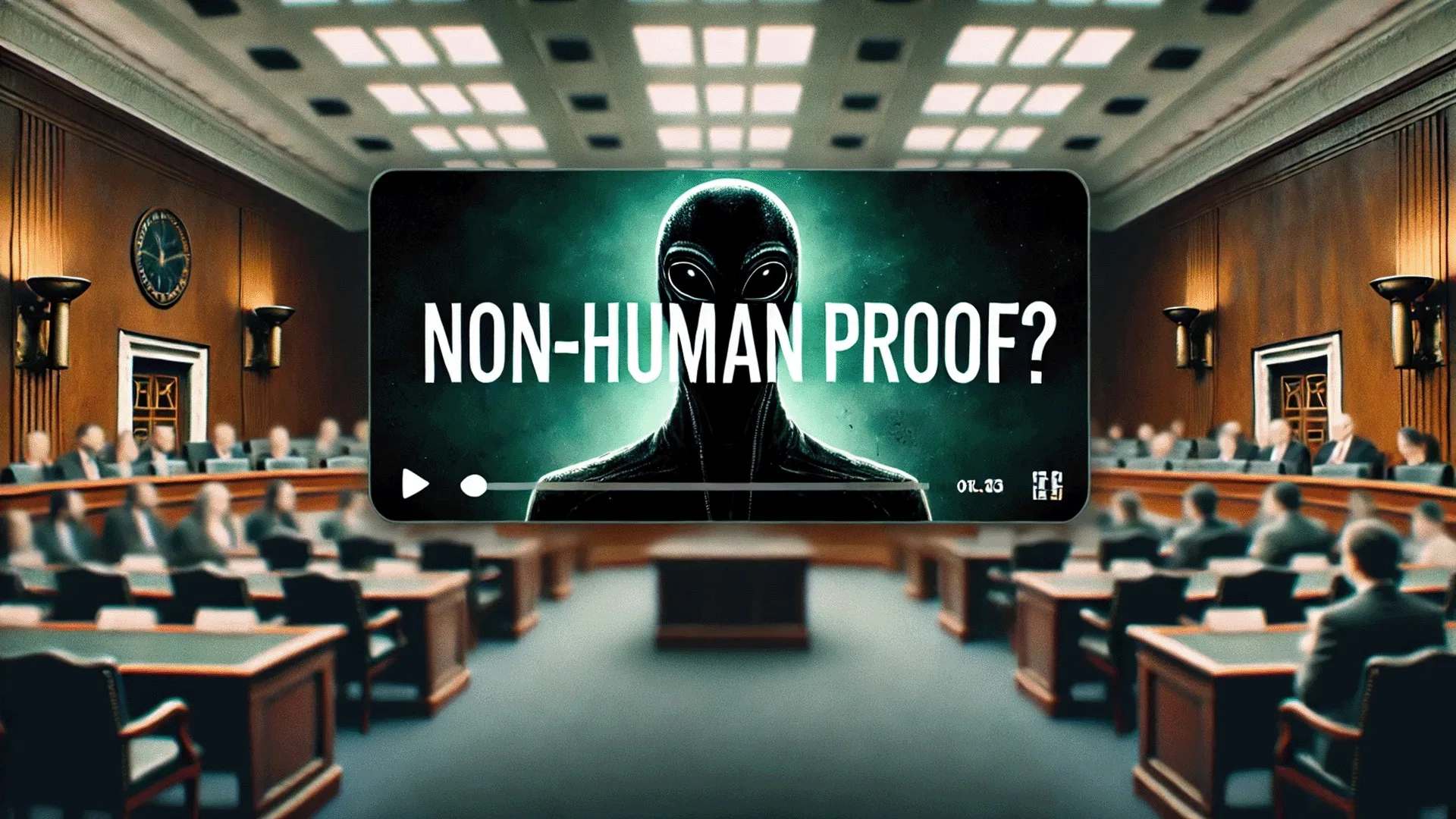Exploring the Evidence: Are Non-Human Intelligences Visiting Earth? The possibility of non-human intelligences (NHIs) existing in the vast expan
Exploring the Evidence: Are Non-Human Intelligences Visiting Earth?
The possibility of non-human intelligences (NHIs) existing in the vast expanse of our universe—and perhaps even visiting our planet—has long intrigued humanity. Recent bipartisan hearings in the U.S. Congress, attended by former military and scientific leaders, have sparked renewed interest in understanding Unidentified Anomalous Phenomena (UAPs) and their implications for national security, scientific advancement, and our place in the universe.
A Paradigm Shift in Understanding Intelligence
One of the most profound themes echoed in recent testimonies is the need to reassess our definition of intelligence. Humans have a history of equating intelligence with characteristics similar to our own. However, as Lou Elizondo, former Director of the Advanced Aerospace Threat Identification Program (AATIP), and other experts have noted, it is critical to broaden our assumptions.
“We must be modest in our assumptions that we’re looking for intelligence that could be biological,” Elizondo said. “It might not be biological, but non-biological.” This idea implies that advanced forms of artificial intelligence (AI) or machine learning might be part of what humanity encounters as we probe deeper into this mystery.
The Evidence We Can’t Ignore: Military Encounters and Whistleblowers
Numerous military accounts and whistleblower reports indicate that UAPs demonstrate capabilities far beyond our known technologies. These objects have been described as spheres, discs, triangles, and more—often exhibiting movements that defy the known laws of physics. According to the testimonies of experts like Admiral Timothy Gallaudet, a former oceanographer and experienced Navy officer, UAPs have shown capabilities that threaten pilot safety during routine military exercises.
Further adding to this conversation, whistleblower David Grusch previously claimed that the U.S. has been engaged in multi-decade crash retrieval and reverse-engineering programs focused on these objects. While Elizondo could not discuss specifics in public, he affirmed, “There are indeed classified Department of Defense materials related to UAPs that could be disclosed without compromising national security.”
Why UAPs Gravitate Toward Nuclear Sites
One of the most concerning observations shared during the hearings is the tendency for UAPs to appear near sensitive military installations and nuclear sites. Admiral Gallaudet highlighted, “It’s not just Oak Ridge or Savannah River. Los Alamos and other advanced research facilities have experienced similar surveillance.”
Why the interest in such sites? Experts suggest that these locations are tied to technological innovation and potential weapons development, making them prime targets for surveillance—whether by foreign adversaries or by unknown entities.
Are We Prepared for the Unexpected?
The conversation surrounding UAPs touches not only on the nature of these phenomena but also on the readiness of our government to address them. Michael Shellenberger, an investigative journalist and author, highlighted the concern that the government may not be transparent about what it knows. “There is a growing body of evidence that the U.S. government is not being transparent about UAPs and that elements within the military and intelligence community are in violation of their constitutional duty to notify Congress of their operations,” he stated.
This lack of transparency raises pressing questions: Is this concealment for national security reasons? Are there factions within the government or private contractors holding back crucial knowledge? These queries are not just theoretical; they impact how we allocate resources, engage in foreign policy, and protect national security.
Check out how Robot Revolution can benefit your daily life, click here to find more.
Biological and Non-Biological Intelligence: The New Frontier
During the hearings, various experts shared that UAPs might not be piloted in ways we traditionally understand. The term “non-human biologics” was used, implying the presence of entities that are neither human nor strictly mechanical. “We’re talking about technologies that can outperform anything we have in our inventory,” Elizondo elaborated, pointing out that these craft exhibit movements involving up to thousands of G-forces, which are far beyond human capabilities.
The implications extend beyond simple sightings. Testimonies suggest that some incidents have led to injuries among military personnel, sparking more questions about what exactly we’re dealing with and whether contact has been made.
International Collaboration and the Role of Contractors
It’s not just the U.S. government that is potentially involved in these programs. Defense contractors like Lockheed Martin and private aerospace companies have been implicated in having knowledge or even direct involvement in these activities. Elizondo hinted, “Different contractors have different levels of expertise… Lockheed Martin is involved in a lot, but the extent needs to be addressed in a classified setting.”
These partnerships underscore the complex web of secrecy surrounding UAP research. While the government maintains classified information, private contractors could be the gatekeepers of technological breakthroughs and data that could reshape our understanding of physics, propulsion, and life itself.
UAPs and the Oceanic Connection
Intriguingly, the hearings also touched on the phenomena’s underwater capabilities, referred to as Unidentified Submersible Objects (USOs). The U.S. Navy has recorded objects moving at incredible speeds beneath the ocean, speeds that outpace any known manned technology. “One instance involved a nuclear-powered submarine detecting an object that exhibited the speed of a torpedo but then followed the submarine before rapidly exiting the scene,” Admiral Gallaudet testified.
Given that only 5% of the ocean has been explored, it’s possible that significant UAP activity may be occurring beneath the waves, away from human scrutiny. These USOs further blur the lines between what is known and what is possible.
Why Overclassification and Stigma Must End
One of the recurring themes in these hearings is the need for transparency. Michael Gold, a former NASA official, pointed out that overclassification stymies not just public understanding but scientific progress as well. “Overclassification is an issue that transcends UAPs. It hampers innovation and keeps valuable scientific and technological data from experts who could use it to solve pressing problems,” he noted.
The stigma attached to UAP research also complicates efforts to study these phenomena. Pilots, both military and civilian, often hesitate to report sightings for fear of ridicule or career repercussions. This cultural barrier must be broken for any meaningful progress to be made.
The Future of UAP Research: A Call for Action
So, where do we go from here? Advocates argue that the government must establish better frameworks for civilian and military reporting and fund independent scientific research into UAPs. Legislation like the UAP Disclosure Act and Safe Airspace for Americans Act could pave the way for transparency.
In conclusion, the reality of non-human intelligences—whether biological or artificial—could redefine humanity’s understanding of life, physics, and our place in the cosmos. While we are just beginning to ask the right questions, the answers may forever change the course of human history.
Check out how Robot Revolution can benefit your daily life, click here to find more.


